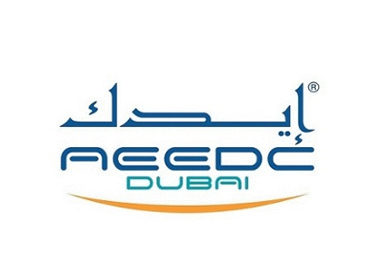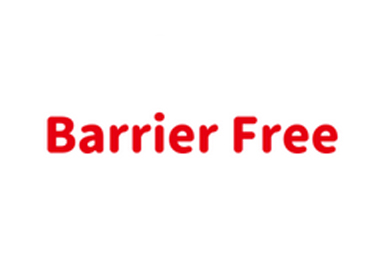



First, the role of exhibitions
1, you can understand peer information, grasp the trend of peer development and development law, determine the correct development strategy of the enterprise, in addition, some industry exhibitions also held a large number of industry forums, seminars, etc., you can further understand the industry information through these meetings.
2, can investigate the local market demand and potential. After all the peers in the world get together through the exhibition, you can obviously feel the development space and market space of the enterprise, and understand the market potential of their own products.
3, through the extensive contact with local agents and dealers during the exhibition, to find the right partners, to participate in the exhibition is nothing more than two categories of people, one is to promote products, the other is to find products, through the fair and open platform, it can be very easy to achieve the docking of the two sides.
4. Establish and maintain the company image. Especially in regions or countries where customers and dealers are relatively concentrated, exhibitions can effectively enhance the company's image, improve product visibility and market competitiveness, and also provide support and assistance to local dealers.
5, through the exhibition can achieve the purpose of visiting customers, an enterprise in a region or country may be a lot of customers, and certainly more scattered, a single visit is not only high cost, but also low efficiency, through the exhibition, you can focus all dealers or customers, negotiate one by one, improve the visit and negotiation efficiency.
6, through the exhibition can achieve the effective transition of trade cooperation to capital cooperation, through face-to-face communication and exchange with customers or dealers, or other enterprises, can stimulate the development of enterprise ideas, detailed understanding of the enterprise product market, and may achieve capital or technical cooperation on a product or technology.
Second, the exhibition's publicity advantages
1, low cost contact with cooperative customer companies and contact with qualified customers, participating in the exhibition is the most effective way. According to a study by Exhibition Research, it costs an average of $177 per visitor to be reached at a trade show, while the average cost of reaching a customer via a sales call is $295.
2, less workload, high quality After contacting qualified customers at the exhibition, the subsequent workload is less. According to the survey of exhibition research company, after contacting a qualified customer at the exhibition, the average need only to make 0.8 calls to the other party to make a sale. By comparison, a typical business sale takes 3.7 calls to complete. According to another study by the McGrohill Research Foundation, 54% of all orders placed by customers to exhibitors as a result of visiting trade shows do not require a personal follow-up visit.
3. Research by the Lead Exhibitor Survey firm shows that, based on the average number of visits to an exhibitor's booth, only 12% received a call from the company's sales staff in the 12 months before the show; 88% are new potential customers, and the trade show also brings high-level visitors to the exhibition. For exhibiting companies' products and services, 49% of visitors to the show are planning to purchase those products and services.
4, competitive advantage, the exhibition provides opportunities for competitors to show themselves. Through well-trained booth staff, aggressive pre-show and in-show promotions, engaging booth design, and rigorous booth follow-up, the competitiveness of exhibiting companies can shine through. Moreover, visitors to the fair will take the opportunity to compare exhibitors. Therefore, this is an open opportunity for exhibitors to demonstrate the excellent features of their products.
5, save time, in the exhibition time, exhibitors contact with potential customers than sales staff can contact the number of people in three months. Meeting potential customers face to face is a quick way to build customer relationships.
6, harmonious customer relationship, customer relationship is a hot topic for many companies, the exhibition is a good place to contact the relationship of existing customers. Exhibitors can express their appreciation to customers in the following ways: warm hospitality, one-on-one dinner, special service, etc.
Iii. Process of the exhibition
Exhibition planning
After the audit is passed, the enterprise can begin to prepare for the exhibition. Exhibitors should do a full market research, collect a variety of information, and classify the information. Through this information to develop a comprehensive exhibition planning program, such as: exhibit selection, cost budget and exhibitors training. Among them, the budget of exhibition costs must be fully considered. The exhibition costs generally include: booth rental, booth design and construction, transportation costs, room and board fees for exhibitors, equipment rental fees, publicity fees, information fees, conference room rental fees and other parts. If the budget is sufficient, you can also set aside some money for emergency funds to deal with unplanned expenses.
Booth design
Exhibitors should determine the location of the booth with the exhibition organizer in advance, and it is recommended to choose their own booth as early as possible according to the selection of the booth. The standard stand size is usually 9 square meters (3m x 3m) and provides some basic facilities necessary for the display. What's included: three display walls, two spotlights, a display table, two chairs, and a three-point power outlet. Those special locations, booth construction and layout are different. Exhibitors should design according to the type of their booth (" island ", "double opening", "road side", "peninsula"). If the exhibitor is not good at booth design and booth construction, you can cooperate with some professional exhibition companies, and they can tailor their own unique booth for the exhibitor according to the type of booth.
pre-publicity
Use the Internet and the media to publish some advertising to expand the influence of the enterprise. The hardware conditions of the exhibition are ready, and the exhibitors will begin to train the participants. Implement the strategy of the whole exhibition, train the professional skills of the exhibitors, master the information of the exhibits, demonstrate and service.
During the exhibition
Exhibitors should use a variety of means such as distributing product promotional materials, on-site product demonstrations and distributing free small gifts to attract visitors' attention and expand the visibility of the enterprise. If the exhibition equipment provided by the exhibition organizer is not enough, exhibitors can contact some exhibition companies to rent some exhibition equipment or provide other services. During the exhibition, exhibitors should pay attention to possible safety problems to ensure the personal safety and property of exhibitors.
Exhibition follow-up
After the closing of the exhibition, the enterprise should contact or visit the customers accumulated in the exhibition and the people who can become potential customers to promote the enterprise. And the total of this exhibition, analysis of the exhibition's benefits and shortcomings.
Fourth, exhibition design and layout skills
1. Unified design and layout of products according to classification
Because the product does not understand the target customer group is different, the company needs to establish the overall image to participate in the exhibition, and the product needs to be unified design and layout according to the classification, which can establish the company image and help the product promotion and negotiation. For exhibitions open to both merchants and the public, separate commercial and public display areas should be designed.
2. Layout should be conceived from the perspective of visitors, not exhibitors.
First of all, our booth designers should know who our target audience is, what feeling we want to leave the audience when we attend the exhibition, and what characteristics the target audience wants to know about our products and what concerns they have. To build a design booth according to the preferences of the target audience can help our exhibition goods transactions. In the clothing industry, for example, a picture of a beautiful model wearing a product is more attractive to buyers than the product in a box on a stand.
3. Key exhibits need to be highlighted
Booth design, we need to focus on our focus of the product highlight, such as new products and large turnover of hot products, we need to reflect this in the booth design, the more important products in the best position and the most suitable area, if necessary, the booth design layout can be around a key product.
4. Highlight the characteristics of the booth during design
Through different booth design techniques around the most concerned highlights of the target audience, through the display board display, stacking display, lighting floor set off, arrangement display, model display and a series of display ways to set off the display, such as luxury goods need to control the number of prominent display to set off noble and so on.
5. Exhibits can be placed in a simulated state of use
A piece of jewelry, a piece of high-end clothing, some home textile products, they are woven on the neck of the model, the model's body, and the living environment can attract the attention of the audience, so that the audience can more intuitively understand the product characteristics and associative use, so as to leave a profound impact on the audience.
Five, the difference between exhibition and exhibition
1. Different directions
The exhibition is market-oriented, while the conference is facility-oriented. The exhibition should go with the market, with the market of the exhibition, there is an exhibition, the exhibition hall is built there to cooperate, rather than the opposite. The conference is different, go to a city to hold a meeting, depending on whether the city has a good conference and exhibition center, enough housing, how much rent, communication equipment and so on.
2. Different repeatability
The repetition of the exhibition is strong, and the repetition of the conference is very small. Many exhibitions are held every year, and some big exhibitions are held every two or even four years. Those large-scale international conferences are arranged in different continents, different countries and different cities every year, and the repetition of the same city is very small. For example, the next APEC meeting will be held in Shanghai in about 30 years.
3. Different venue requirements
The exhibition requires a larger site area and a longer use time, coupled with the application for admission and preparation of the museum, the time will be longer. The venue requirements of the conference are scattered and the time is relatively short, and the time to enter the hall is not long.
4. Different service scope
Some services of the exhibition, such as booth construction, transportation, etc., are responsible for the exhibition contractor, and the exhibition area only provides infrastructure; The conference relies on the venue to provide comprehensive services, including sound, communication, information systems, venue layout, etc. In addition, in terms of catering services, the requirements of the exhibition are relatively simple, generally providing basic catering, while the catering service of the conference is required to be comprehensive, usually have lunch, breakfast, dinner, and refreshments during the meeting.
5. Different number of participants
The number of participants in the exhibition is large, there are generally tens of thousands of people, the number of meetings is much less than the exhibition, and the meeting of thousands of people is large-scale. The requirements of a convention and exhibition center are different, and their management methods should also be different.